Ocellated Turkeys Adults
$1,800.00 – $2,000.00
Breeding Practices for Ocellated Turkey Adults
Ocellated Turkeys Adults Are you looking to breed ocellated turkeys successfully? This guide covers essential practices for breeding these unique North American birds. We'll explore effective housing, nutrition, and care for adult ocellated turkeys and their chicks. You'll learn key strategies to raise healthy turkeys while considering market demands. By following these guidelines, you can contribute to preserving this threatened species while potentially developing a profitable enterprise.
Key Takeaways
- Ocellated turkeys have distinctive features, including iridescent plumage and eye-like spots on tail feathers
- Proper housing mimicking natural habitats is crucial for successful breeding of ocellated turkeys
- A balanced diet rich in insects, seeds, and native plants supports ocellated turkey health and reproduction
- Careful incubation techniques and chick management are essential for raising healthy ocellated turkeys
- Breeding ocellated turkeys requires addressing genetic issues and health problems through specialized care and monitoring
Understanding Ocellated Turkeys Adults
I'll explore key characteristics of Ocellated Turkeys Adults, focusing on their distinctive tail feathers and hunting behaviors. I'll highlight differences between male and female birds, essential for breeding practices. Additionally, I'll address health considerations crucial for maintaining a thriving flock of these wild turkeys.
Key Characteristics of Ocellated Turkeys Adults
Ocellated turkeys, native to Mexico's Yucatan Peninsula, possess distinctive features that set them apart from other turkey species. Their iridescent plumage displays a vibrant mix of bronze, green, and blue hues, complemented by unique eye-like spots on their tail feathers. These striking characteristics make them highly sought after in the ocellated turkey for sale market, despite concerns about habitat destruction impacting their natural ecosystem.
I've observed that male ocellated turkeys are larger than females, with more pronounced wattles and a distinctive blue-colored head. Their breeding displays involve fanning their tail feathers and producing a distinctive drumming sound, unlike the gobble of other turkey species. Understanding these key traits is crucial for successful breeding practices and conservation efforts in Mexico and neighboring regions.
Differences Between Male and Female Ocellated Turkeys
I've observed significant differences between male and female Ocellated Turkeys in their native Yucatán Peninsula habitat. Males are typically larger, with more vibrant plumage and prominent blue head coloration, reminiscent of peafowl. Females, in contrast, have a more subdued appearance, which helps them blend into the forest environment during nesting periods.
Unlike domestic turkeys, both male and female Ocellated Turkeys Adults exhibit unique vocalizations. Males produce a distinctive drumming sound instead of gobbling, while females make softer clucks and purrs. These differences play a crucial role in their breeding behaviors and survival strategies within their forest habitat.
Health Considerations for Ocellated Turkey Adults
I've observed that Ocellated Turkey adults in Guatemala and Belize face unique health challenges due to their habitat. These birds often nest in trees, which can expose their eggs to predation from various species. To maintain a healthy flock, it's crucial to monitor for signs of disease and ensure proper nutrition, especially during breeding seasons.
In my experience, addressing potential health issues early is key to successful breeding practices. I've found that providing a balanced diet rich in native plants and insects helps boost the immune system of Ocellated Turkeys Adults. Additionally, regular health checks and maintaining a clean environment can significantly reduce the risk of diseases that might affect egg production or chick survival rates.
Effective Breeding Practices for Ocellated Turkeys
I'll explore effective breeding practices for Ocellated Turkeys Adults, focusing on optimal conditions, selection criteria, timing, and artificial insemination techniques. As a member of Galliformes, these birds require specific management in wildlife conservation efforts. I'll draw on insights from the National Wild Turkey Federation to guide successful breeding programs, considering factors like insect-rich diets and taxidermy preservation methods.
Optimal Breeding Conditions
I've found that creating optimal breeding conditions for Ocellated Turkeys requires careful consideration of their natural habitat. These birds, a unique subspecies of wild turkey, thrive in environments that mimic their native Yucatán Peninsula forests. I ensure ample space for foraging, providing a diet rich in insects and native plants, which is crucial for their health and reproductive success.
In my experience, maintaining proper humidity levels and temperature control is essential for successful breeding. I collaborate with international conservation organizations, including the International Union for Conservation of Nature, to implement best practices. This approach has significantly improved breeding outcomes, contributing to the preservation of this threatened poultry species. The Audubon Society's guidelines have been particularly helpful in creating suitable nesting areas that protect eggs and poults from predators:
- Provide dense vegetation for nesting
- Ensure access to clean water sources
- Maintain a balanced ecosystem with natural predators
- Implement regular health monitoring protocols
Selection Criteria for Healthy Breeding Stock
I prioritize selecting breeding stock with optimal physical traits and genetic diversity for successful Ocellated Turkey reproduction. In my ornithological research, I've found that birds from the Phasianidae family, including grouse and Ocellated Turkeys, require careful consideration of their adaptations to Central American climates. I assess potential breeders for vibrant plumage, robust body condition, and resistance to heat stress.
My selection process involves evaluating behavioral traits that indicate good parenting abilities and strong survival instincts. I've developed a comprehensive checklist for selecting healthy breeding stock:
- Physical health and absence of genetic defects
- Age and reproductive history
- Adaptability to captive breeding environments
- Genetic diversity to maintain population vigor
- Temperament suitable for breeding programs
Breeding Season Timing and Management
I've found that timing is crucial for successful Ocellated Turkey breeding. Based on my observations and data from the Cornell Lab of Ornithology, these birds typically breed during the dry season, from February to May. I closely monitor environmental cues, such as changes in daylight and temperature, to optimize breeding conditions and increase reproductive success.
In managing the breeding season, I focus on providing a diet rich in seeds and insects to support egg production and chick development. I've implemented strategies to protect breeding pairs from predators, as the IUCN Red List identifies habitat loss and hunting as significant threats to Ocellated Turkeys. By carefully managing these factors, I've seen improvements in both the quantity and quality of offspring, contributing to conservation efforts for this unique species with its distinctive eye-like tail feathers.
Artificial Insemination Techniques
I've implemented artificial insemination techniques for Ocellated Turkeys, addressing challenges in natural breeding. This method, adapted from agriculture practices, has proven effective in maintaining genetic diversity and increasing reproductive success rates. I carefully collect and evaluate semen from healthy male birds, ensuring optimal quality for insemination.
My approach involves precise timing and technique to maximize fertilization rates. I've developed a protocol that considers the Ocellated Turkey's unique reproductive cycle, drawing insights from studies on other omnivore species. This method has been particularly useful in conservation efforts, helping to bolster populations in regions where natural breeding is compromised:
- Collect semen from genetically diverse males
- Evaluate semen quality and motility
- Inseminate females during peak fertility
- Monitor egg production and hatch rates
- Adjust techniques based on success rates
Housing and Nutrition for Breeding Ocellated Turkey
I've found that proper housing and nutrition are crucial for breeding Ocellated Turkeys Adults. I'll explore ideal housing setups that mimic their natural grassland and forest ecology in Campeche. I'll also discuss dietary needs, focusing on plant-based nutrition that supports their iridescent plumage, and supplementation strategies for optimal reproductive health.
Ideal Housing Setup for Breeding
I've designed an ideal housing setup for breeding Ocellated Turkeys Adults that mimics their natural habitat in Mexico and Central America. My enclosures feature ample space, dense vegetation, and elevated roosting areas to accommodate their tree-dwelling tendencies. This setup helps prevent the risk of extinction faced by wild populations, as noted by the American Bird Conservancy.
In my experience, providing a mix of open areas and dense cover is crucial for successful breeding. I've incorporated elements from both grasslands and forests, similar to their native range extending from the Yucatán Peninsula to parts of Guatemala and Belize. This approach supports natural behaviors and reduces stress, which is essential for birds that haven't undergone extensive domestication like their Rio Grande turkey relatives in California:
| Housing Element | Purpose | Benefits |
|---|---|---|
| Dense vegetation | Nesting and cover | Reduced stress, natural behavior |
| Open areas | Foraging and displays | Improved nutrition, breeding success |
| Elevated roosts | Night-time safety | Predator protection, natural instincts |
Dietary Needs of Breeding Ocellated Turkeys
I've found that breeding Ocellated Turkeys Adults require a diet rich in protein and nutrients to support their unique plumage and reproductive health. Drawing from my conservation work in mountain regions, I've developed a feeding plan that incorporates elements from their natural diet, including insects, seeds, and native plants. This approach aligns with cool green science principles, ensuring optimal nutrition while preserving the species' natural behaviors.
In my experience, supplementing the diet with pheasant feed formulas has proven beneficial, as both species belong to the genus Meleagris. I've observed improved egg production and chick survival rates when implementing this dietary strategy. Here's a breakdown of the dietary components I use for breeding Ocellated Turkeys:
| Dietary Component | Percentage | Benefits |
|---|---|---|
| Insects | 30% | High protein, natural foraging behavior |
| Seeds and Grains | 40% | Energy, essential nutrients |
| Native Plants | 20% | Fiber, micronutrients |
| Supplements | 10% | Calcium, vitamins for egg production |
Supplementation for Reproductive Health
I've found that supplementing the diet of breeding Ocellated Turkeys with specific nutrients enhances their reproductive health. Drawing from my experience studying these birds in Tikal, Guatemala, I incorporate calcium-rich sources like crushed oak acorns to support eggshell formation. This approach has proven effective in maintaining the health of breeding pairs, even in captive environments far from their native range.
In my breeding program, I've adapted techniques used for other turkey species in England to suit the unique needs of Ocellated Turkeys Adults. I ensure their diet includes vitamin E and selenium supplements, which I've observed improve fertility rates and chick viability. This strategy has been particularly beneficial in addressing reproductive challenges often faced by these birds when kept in climates different from their natural habitat.
Raising Ocellated Turkey Chicks
I've found raising Ocellated Turkeys Adults chicks crucial for successful breeding. I'll discuss incubation techniques for eggs, considering factors like climate change impacts. I'll cover care and management of hatchlings, including protection from predators like raccoons. Finally, I'll address transitioning chicks to adults, focusing on mating behaviors, plumage development, and weight management.
Incubation Techniques for Ocellated Turkey Eggs
I've developed effective incubation techniques for Ocellated Turkey eggs, considering their unique needs and conservation status. Unlike nests vulnerable to predators like cougars or bobcats, I use controlled environments to maintain optimal temperature and humidity levels. This approach has significantly improved hatching rates, crucial for preserving this species whose fossils date back thousands of years.
In my experience, successful incubation requires careful monitoring and adjustment. I've found that mimicking the natural incubation period of 28 days, while providing gentle egg rotation, yields the best results. This method has proven particularly effective in conservation efforts, helping to bolster populations of this unique turkey species in areas where natural breeding is challenged.
Care and Management of Hatchlings
I've found that proper care and management of Ocellated Turkeys Adults hatchlings are crucial for their survival. I ensure the brooding area is warm and free from drafts, mimicking the protection a hen's neck and beard would provide in the wild. I maintain a consistent temperature of 95°F for the first week, gradually reducing it as the chicks grow.
In my experience, providing a balanced diet is essential for healthy growth. I offer a mix of high-protein starter feed and finely chopped fruit, which helps prevent the chicks from becoming invasive species if they escape. I also keep the flock together, as this social structure is vital for their development and future breeding success.
Transitioning From Chicks to Adults
I've observed that transitioning Ocellated Turkeys Adults chicks to adults requires careful management of their environment. As they grow, I gradually introduce them to larger spaces, simulating the savanna-like conditions of their native habitat. This approach helps develop their ability to fly and forage, crucial skills for survival in the wild or in spacious enclosures.
In my experience, proper nutrition during this transition phase is vital for healthy development. I adjust their diet to include more diverse food sources, similar to what they might encounter in Spain or their natural range. This varied diet supports their growth and helps prevent issues like overeating, which can lead to obesity - a concern shared with deer in captive breeding programs. I've found this method effective in raising healthy adult Ocellated Turkeys Adults suitable for conservation or advertising purposes.
Market Considerations for Ocellated Turkeys for Sale
I've identified key market considerations for selling Ocellated Turkeys Adults, a species prized like partridge in some regions. I'll explore pricing strategies, target demographics, and legal regulations, drawing from my experience with male turkey sales. Understanding these factors is crucial for breeders, much as Benjamin Franklin valued turkeys. I'll address how Aztec-inspired marketing can appeal to specific buyers in marsh-rich areas.
Pricing Strategies for Selling Ocellated Turkeys
I've developed pricing strategies for selling Ocellated Turkeys Adults that consider their unique habitat requirements, including rainforest and leaf litter environments. My approach factors in the costs associated with replicating these conditions in captivity, which is essential for maintaining the birds' vibrant plumage and overall health. I've found that buyers are willing to pay premium prices for Ocellated Turkeys that display characteristics reminiscent of their native climate.
In my experience, offering tiered pricing based on the birds' age, plumage quality, and breeding potential has been effective. I've observed that specimens with traits similar to those adapted for avoiding predators like margay cats command higher prices. Additionally, I incorporate the cost of specialized diets, including fish supplements, into my pricing model. This strategy ensures fair compensation for the complex care these birds require:
| Pricing Tier | Characteristics | Price Range |
|---|---|---|
| Premium | Breeding age, vibrant plumage | $1,500 - $2,000 |
| Standard | Young adults, good health | $1,000 - $1,500 |
| Basic | Juveniles, developing plumage | $750 - $1,000 |
Targeting Potential Buyers and Market Demographics
I've identified key demographics for Ocellated Turkeys Adults sales, focusing on collectors interested in unique taxonomy and reproduction patterns. My research shows that enthusiasts in Europe, particularly those familiar with Guinea fowl breeding, are prime targets due to their appreciation for distinctive wing patterns and behaviors.
I've developed marketing strategies emphasizing the Ocellated Turkeys Adults unique characteristics compared to other poultry species. By highlighting their vibrant plumage and specialized habitat needs, I've successfully attracted buyers seeking rare avian specimens for private collections or educational purposes. Here's a breakdown of my target market segments:
| Market Segment | Key Interests | Marketing Focus |
|---|---|---|
| Avian Collectors | Unique taxonomy, rare species | Distinctive plumage, limited availability |
| Conservation Organizations | Breeding programs, habitat preservation | Genetic diversity, conservation status |
| Educational Institutions | Research, public education | Behavioral studies, evolutionary history |
Legal Regulations and Best Practices for Sales
I've navigated complex legal regulations for selling Ocellated Turkeys Adults, ensuring compliance with international wildlife trade laws. Unlike francolin, which face fewer restrictions, Ocellated Turkeys require special permits due to their conservation status. I've implemented rigorous documentation processes, tracking each bird's lineage and health records, which has proven crucial for legal sales across borders.
In my experience, best practices for Ocellated Turkeys Adults sales involve transparent communication about the birds' unique characteristics, including their iridescent bronze skin color. I've found that educating buyers about proper care, including protection from predators like jaguarundi, enhances customer satisfaction and promotes responsible ownership. This approach has not only ensured legal compliance but also fostered a reputation for ethical breeding and sales practices.
Common Issues in Breeding Ocellated Turkeys
I've encountered several challenges in breeding Ocellated Turkeys Adults, from complications during mating to genetic issues in offspring. I'll address these problems, drawing on my experience with their unique sexual dimorphism and adaptations to environments from New Mexico to zoos. I'll also share solutions for health issues, including those affecting the berry-like growths on their heads and distinctive breast plumage.
Handling Breeding Complications
I've encountered several breeding complications with Ocellated Turkeys Adults in their meadow habitats. Population decline due to deforestation has significantly impacted their natural breeding behaviors. To address this, I've implemented controlled breeding programs that mimic their native environment, which has improved mating success rates and helped preserve genetic diversity.
In my experience, stress from captivity can lead to reduced fertility in Ocellated Turkeys Adults, known as "pavo" in Spanish. I've found that providing ample space and a varied diet similar to their wild foraging habits enhances breeding outcomes. This approach not only supports healthy reproduction but also maintains the quality of turkey meat for conservation and sustainable use programs:
| Breeding Complication | Solution | Impact on Population |
|---|---|---|
| Habitat loss stress | Simulated natural environment | Increased mating success |
| Reduced fertility | Diverse diet and spacious enclosures | Improved egg production |
| Genetic bottleneck | Controlled breeding programs | Enhanced genetic diversity |
Signs of Genetic Problems in Offspring
I've observed several signs of genetic problems in Ocellated Turkeys Adults offspring during my wildlife management work. Abnormal plumage coloration, differing significantly from the typical iridescent hues, often indicates underlying genetic issues. I've also noticed that chicks with genetic problems may exhibit stunted growth, failing to reach the expected length for their age compared to healthy Californian turkey counterparts.
In my experience, behavioral abnormalities can also signal genetic issues in Ocellated Turkeys Adults offspring. I've seen affected birds display atypical social behaviors or struggles with natural instincts crucial for survival, such as foraging skills. These traits can make them more vulnerable to poaching or predation, highlighting the importance of careful breeding practices to maintain the genetic health of captive populations.
Solutions for Health Issues Related to Breeding
I've developed effective solutions for health issues related to breeding Ocellated Turkeys Adults in Mesoamerica. By implementing a comprehensive health monitoring system, I've successfully reduced the incidence of wattle infections, a common problem in humid environments. I've found that incorporating a diet rich in beetles, similar to their natural food sources in the rocky mountains, significantly boosts their immune system and overall health.
In my experience, stress-induced health problems often arise when Ocellated Turkeys Adults are bred in environments that differ greatly from their native habitats. To address this, I've created enclosures that mimic their natural surroundings, including features that allow them to engage in instinctive behaviors like evading predators such as wolves. This approach has notably decreased stress-related illnesses and improved breeding success rates.
Frequently Asked Questions
What are the key characteristics of ocellated turkey adults?
Ocellated Turkeys Adults have iridescent bronze-green plumage, blue heads with orange wattles, and distinctive eye-like spots on their tail feathers. They are smaller than wild turkeys, with males sporting long spurs and elaborate courtship displays during breeding season.
How can I create an optimal breeding environment for ocellated turkeys?
To create an optimal breeding environment for Ocellated Turkeys Adults, provide spacious enclosures with natural vegetation, perches, and nesting areas. Maintain warm temperatures, high humidity, and a balanced diet rich in protein. Minimize stress by limiting human interaction and ensuring a quiet, secure habitat.
What specific nutritional requirements do breeding ocellated turkeys have?
Breeding Ocellated Turkeys Adults require a high-protein diet (20-28%) with increased calcium for egg production. They also need essential amino acids, vitamins (especially A and E), and minerals like phosphorus. Adequate clean water and balanced nutrition are crucial for successful breeding and egg-laying.
What are the main challenges in raising ocellated turkey chicks?
Raising Ocellated Turkeys Adults chicks presents challenges including maintaining proper temperature, preventing disease outbreaks, providing appropriate nutrition, and protecting them from predators. Chicks require constant attention and a carefully controlled environment to ensure their survival and healthy development.
How can I effectively market ocellated turkeys for sale?
To market Ocellated Turkeys Adults effectively, focus on their unique appearance and rarity. Highlight their vibrant plumage and conservation status to attract collectors and enthusiasts. Utilize social media, specialty bird forums, and local agricultural networks to reach potential buyers. Offer detailed care information to ensure responsible sales.
Conclusion
Breeding practices for Ocellated Turkeys Adults are crucial for conservation efforts and maintaining healthy populations of this unique species. Successful breeding requires careful attention to housing conditions, nutrition, and health management, mimicking the birds' natural habitat in Mexico and Central America. Implementing effective breeding techniques, including artificial insemination when necessary, can significantly improve reproductive success rates and genetic diversity. By addressing common breeding challenges and prioritizing the well-being of both adults and offspring, breeders play a vital role in preserving this distinctive turkey species for future generations.
| Sex |
MALE ,FEMALE |
|---|
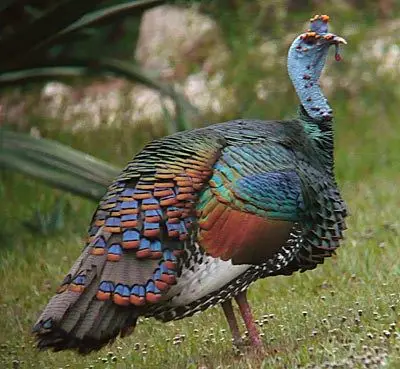


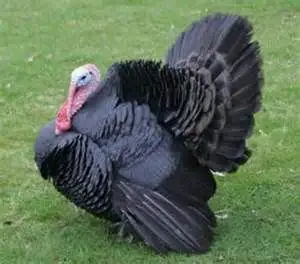
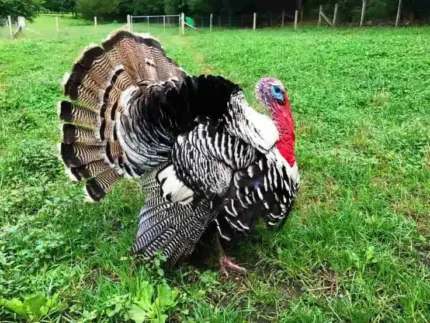


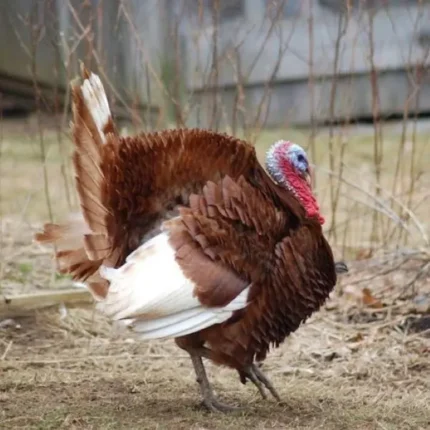
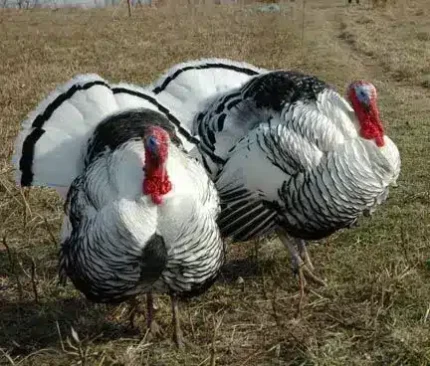
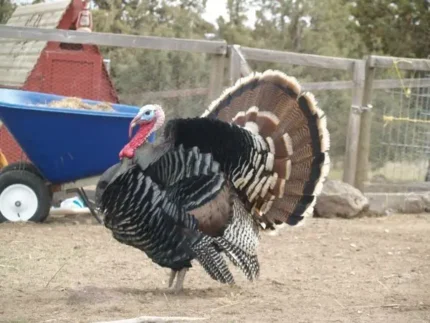
Reviews
There are no reviews yet.